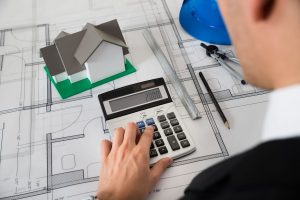If you’re a real estate investor, you’re going to want to understand depreciation on rental property. Why is it one of the biggest benefits of investing in real estate?
Investing in rental properties can be one of the smartest financial moves of your career. However, in order to truly succeed in the real estate investment business, you should know how depreciation on rental property works.
The greatest thing about owning a residential rental property is that it provides a steady inflow of rental income while you build equity and the property appreciates. There are also many rental property tax deductions. You can deduct any rental expenses from your rental income, which will lower your tax liability. These rental expenses include repair and maintenance, property taxes, mortgage insurance, property management expenses, and so on. However, there is one more key tax deduction- rental property depreciation.
Related: Why Buying a Rental Property Is the Best Investment
Depreciation on Rental Property

You’ve probably heard about depreciation in regards to other assets, but why is it such a heavily discussed topic in real estate investing? Let’s define depreciation first to get a better idea of its relevance.
Depreciation on rental property is the process used to deduct the costs of buying and improving said rental property. It differs from other expenses in the sense that real estate depreciation spreads these costs across the useful life of the property. So you wouldn’t take one single large tax deduction in the year you purchased the property; instead, you’d take a portion of the cost of the building as a smaller depreciation deduction each year.
Related: All You Need to Know About Investment Property Tax Deductions
The main difference between depreciation on rental property and depreciation on any other asset is that the property value isn’t actually declining. That would be the typical case for any other asset (such as a car or mechanical equipment) in which its value is actually decreasing with use and time. However, depreciation on rental property is about allocating its cost, not assessing its value. So you’ll depreciate the rental property even if it remains in perfect shape. Real estate property is actually known to increase in value as time passes (appreciation).
Related: Where to Invest in Real Estate for Appreciation in 2018: 5 Top Cities
Depreciable Real Estate Property
According to the IRS, you can take a deduction for depreciation on rental property, if that property meets these criteria:
- You own the property, not renting or borrowing from someone. You are considered the owner even if the property is subject to a debt.
- You’re using this property as a rental property. It is an income-producing property, either through rent or another income source.
- You are able to determine it’s “useful life.” The property must eventually wear out or get ‘used up.’ A building, such as a house, typically has a definable useful life, as opposed to a vacant piece of land which does not.
- This useful life is more than a year. If it isn’t, you’d typically deduct the entire cost as a regular rental expense.
Depreciating Improvements
In addition to depreciating the cost of the property, you can also depreciate the money used on property improvements. An improvement differs from regular repairs. Something is considered an improvement if it:
- Enhances the property value or its usefulness
- Improves the property’s condition (new or like-new)
- Adapts the property to new use
Examples of rental property improvements that can be depreciated are:
- Replacing the roof
- Buying new appliances (fridge, dishwasher, dryer, etc.)
- Installing air-conditioning or heating
- Building a garage
- Adding carpeting
How Long Does Depreciation on Rental Property Last?
You can’t start taking depreciation deductions until you begin using the property to generate rental income. The IRS refers to this as putting the property “in service.” Like we mentioned above, the property must actually be performing as a rental property. So when does depreciation end? Depreciation will continue until either:
- You’ve deducted your entire cost basis in the rental property. Usually, the cost basis includes the cost of the property and any property improvements.
- The property is no longer “in service.” Either you’ve stopped using it as a rental property or you sold it.
How to Calculate Depreciation on Rental Property

There are several methods for calculating depreciation. The most straight-forward option (typically used for home improvements), is the straight-line method. The basic formula is:
Annual Depreciation Expense= (Cost of Asset – Salvage Value) / Useful Life
However, the case differs when calculating depreciation on rental property. The IRS requires any residential rental property placed in service after 1986 to be depreciated using the Modified Accelerated Cost Recovery System (MACRS). This is an accounting technique that spreads costs and depreciation deductions over 27.5 years, which is the amount of time the IRS considers to be the “useful life” of a rental property. The math and calculations involved in this method are a bit more complex. We recommend working with a professional. However, if you want to get a better idea of how to calculate depreciation on rental property, follow these steps:
#1. Determine the cash basis of the property
We’ve already mentioned cash basis above. It typically includes the cost of acquiring the property including any settlement fees and cost of improvements.
#2. Separate the two major costs: land and building
Remember, only the rental property itself is depreciable, not the land it’s on. You need to determine the value of each to depreciate the correct amount. You can use the fair market value of each at the time of the purchase.
#3. Determine your basis in the building
Once you know the basis of the property (land and building), and the value of the building, you can determine the basis of the building.
#4. Determine adjusted basis (if necessary)
You might need to adjust your cash basis on the rental property if certain events took place between the time of purchase and time of renting. For example, certain legal fees or improvements during that time would be included as an increase to basis here.
Don’t want to go through the complexities of calculating depreciation on rental property? You don’t have to! Use Mashvisor’s rental property calculator which digitally calculates things like total depreciation, land value, and more. To start using this calculator now, sign up for Mashvisor!